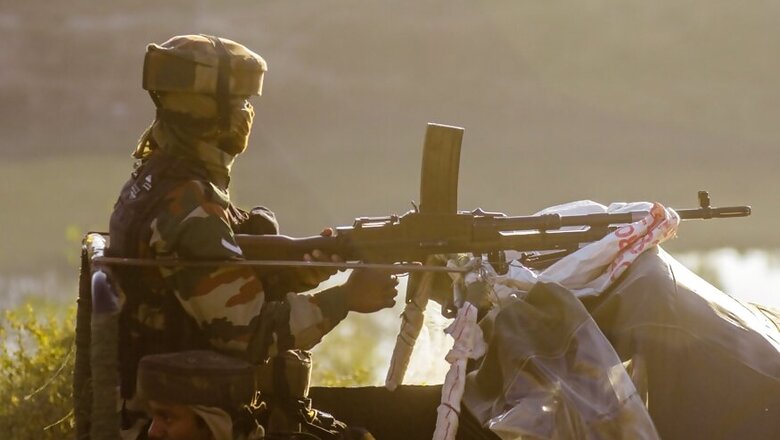
views
New Delhi: The terror attack on Sunjwan Army camp left six Army men, one civilian dead and 11 others injured. The two-day gun battle ended with three Jaish-e-Mohammad (JeM) terrorists being killed.
The attack reminds one of the September 2016 Uri terror attack, to which India retaliated by launching a surgical strike on terror havens in Pakistan Occupied Kashmir (POK) a week later.
Can India respond to the Sunjwan attack like it did after Uri? Are there military operations available to India, short of launching a full-scale war? According to experts, the answer is yes.
“There are a range of options available to the Indian Army. We could respond with ceasefire violations of our own by firing with heavy artillery guns at Pakistan Army posts across the Line of Control (LoC). This, in my opinion, should continue since constant pressure is required to keep Pakistan in check,” said Major General (retired) Naresh Badhani.
He added, though, that this wasn’t probably the best plan of action. “There are some limitations to a response like this. For example, it only targets 2-3 Pakistan Army posts at the same time. Also, there is a high chance of civilian casualties on both sides. The Indian Army doesn’t want to hurt innocent people. This is why a more precise escalation is required,” said the ex-serviceman.
What, though, constitutes an “escalation” and how is it different from a full-fledged war? “If there is an airstrike, or if Indian troops cross the LoC, or if there is an overt display of military movement, it could be taken as an indication of war. Instead, we can take lessons from our own surgical strikes of 2016 and repeat something similar, albeit on a larger scale.”
He further explained, “The LoC is over 760 kilometers long with hundreds of Pakistan Army posts along it. What we need is a coordinated artillery response at least 20-30 points along the LoC. We need to destroy the maximum number of Pakistan Army posts along the LoC within a short time span, say, one week.”
He explained there was a reason why local insurgents are not as well trained as Pakistani terrorists. “They (the terrorists) have infrastructure available on that side of the LoC, propped up by the Pakistan Army. Unless their army feels the pain, they will not stop this nonsense. They need to be fearful of their own posts. We need to keep them occupied with their own safety so that they don’t go ahead and train terrorists.”
The Jammu terror attack is the latest in a string of attacks over the last three years on Indian military installations by cross-border terrorists.
This time, however, many believe the terrorists crossed a “Red Line” by targeting families, including women and children, of Indian troops.
According to Badhani, this shows there is a need to ensure that Indian Army Cantonments are made impregnable. “You see, it is very difficult to distinguish the local civilian population and an infiltrating terrorist because Pakistanis look like us, speak like us and dress like us. The advantage is always with the attackers.”
This is the reason that cantonments were equipped with electronic surveillance, explained Badhani. “But I don’t think these have been fully put in place. This is something that the government should look into as a priority,” said the ex-Army officer.


















Comments
0 comment